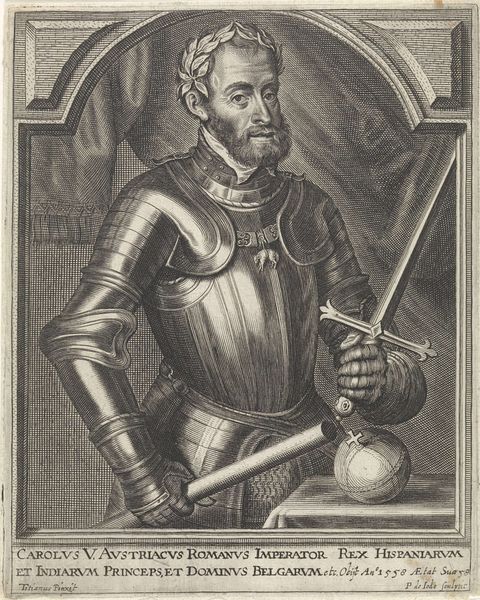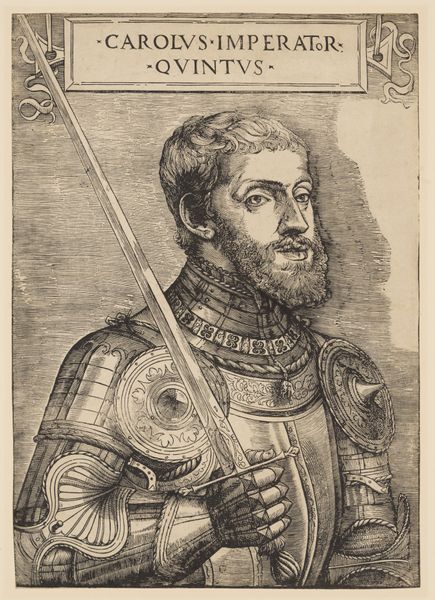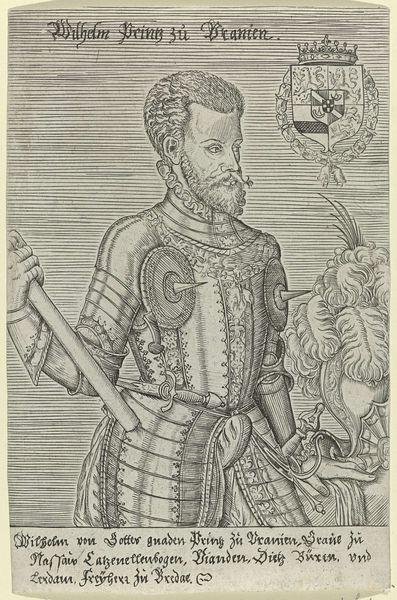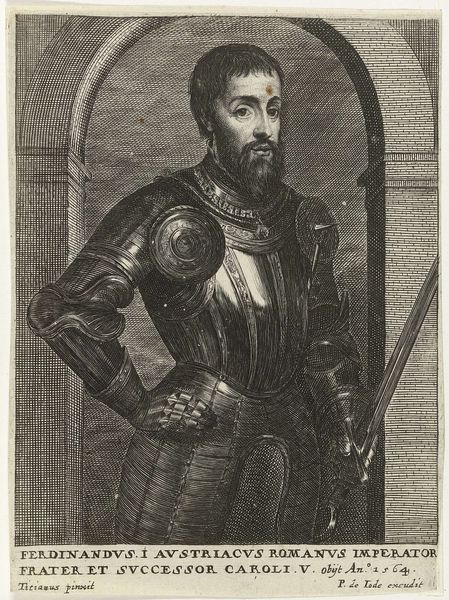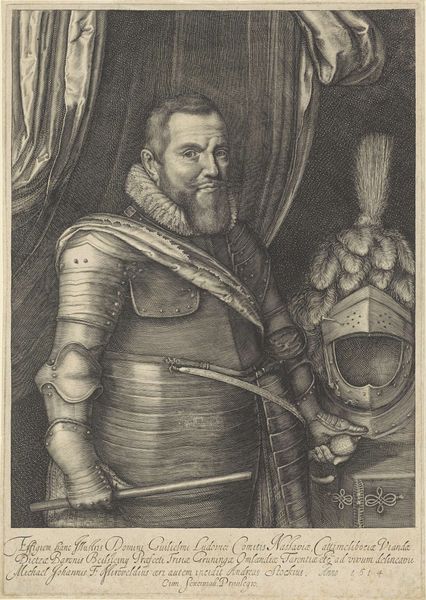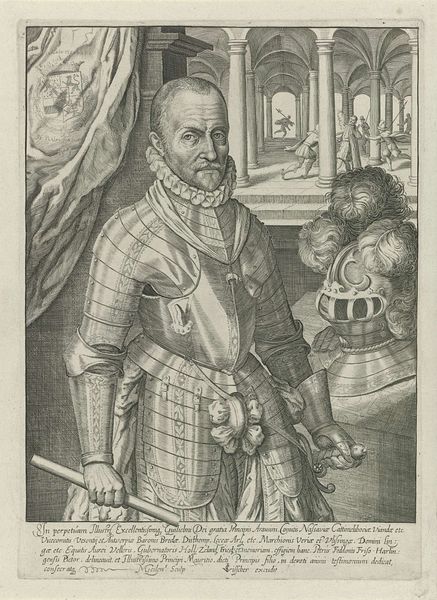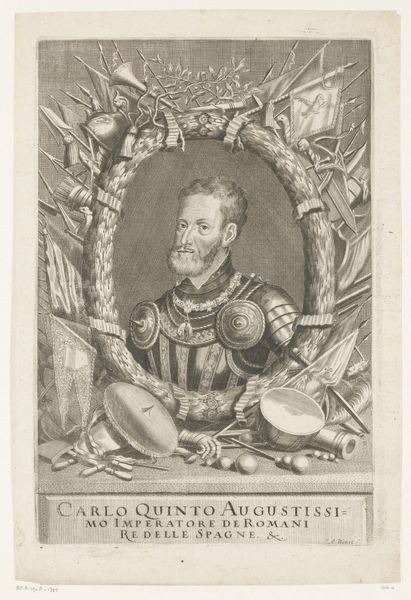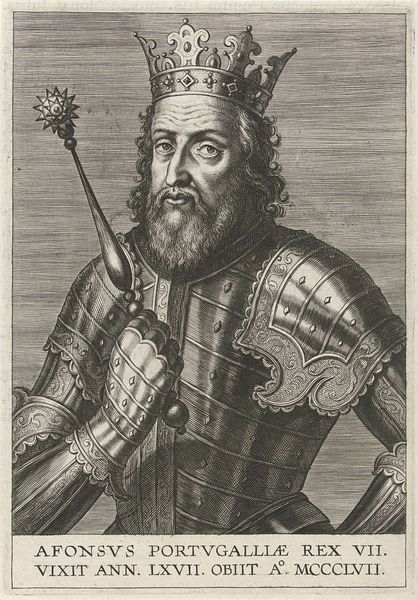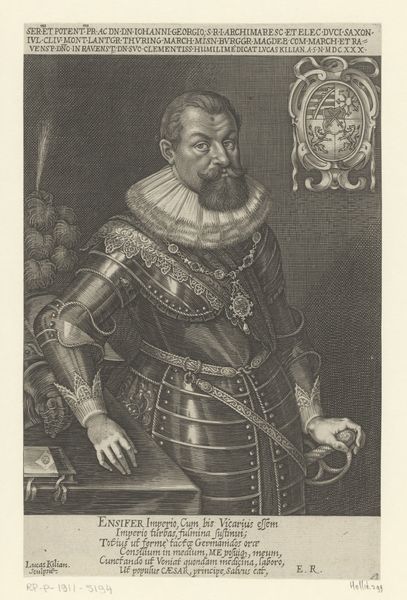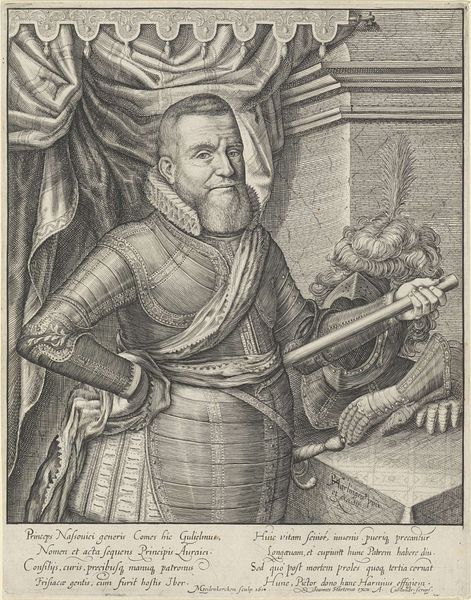
drawing, print, metal, engraving
#
portrait
#
drawing
# print
#
metal
#
men
#
portrait drawing
#
history-painting
#
armor
#
engraving
Dimensions: Sheet (Trimmed): 17 3/16 in. × 13 in. (43.7 × 33 cm)
Copyright: Public Domain
Curator: Immediately striking is the formality of this portrait; Vorsterman's engraving of Emperor Charles V from around 1615-1635 certainly captures a specific sense of authority. The medium itself, metal engraving, seems appropriate, almost echoing the armor worn by the subject. What do you see? Editor: Impenetrability, first and foremost. All that metal suggests layers of protection and detachment from those he ruled. I wonder, did that distance serve to alienate or strengthen his command? The engraving looks so cool; one can almost feel the weight of the empire reflected in all of that hardware. Curator: The armor, of course, functions as a powerful symbol of Charles' reign and identity, evoking his role as a military leader defending the Holy Roman Empire, and, more broadly, Christendom. In visual terms, it associates him with specific ideals of masculine authority, of righteousness and might. The sword mirrors this aspect, ready to execute judgements. Editor: Right, the iconography of power! But doesn't the rendering, though skillfully executed, seem somewhat flat and one-dimensional? Are we meant to celebrate strength, or is there also a critique of absolute power embedded here? Curator: Perhaps Vorsterman invites both. On the one hand, this image solidifies Charles' status as a central figure of European history, connecting him to classical ideals of leadership. Yet the coolness, that remove you observed earlier, invites reflection on the burden and the potential isolation inherent in wielding such power. Also notice his clothing that sits on his chest and shoulders; it indicates the medal and insignia which communicate the dynasty power he belongs to. Editor: Good point. Consider the time too; there were those rising religious and political conflicts of the era. Maybe this portrait, made some time after Charles’ reign, is wrestling with the complex legacy of imperial power in a changing world. He doesn’t even look directly at us; there is no shared moment; he is already the past, on guard about his heritage. Curator: Absolutely. Symbols persist precisely because they continue to speak across time, generating ever new meanings through interaction with different audiences. Even now. Editor: Indeed. It’s a powerful image that encourages thinking about both the personal and structural aspects of power across history and society.
Comments
No comments
Be the first to comment and join the conversation on the ultimate creative platform.
